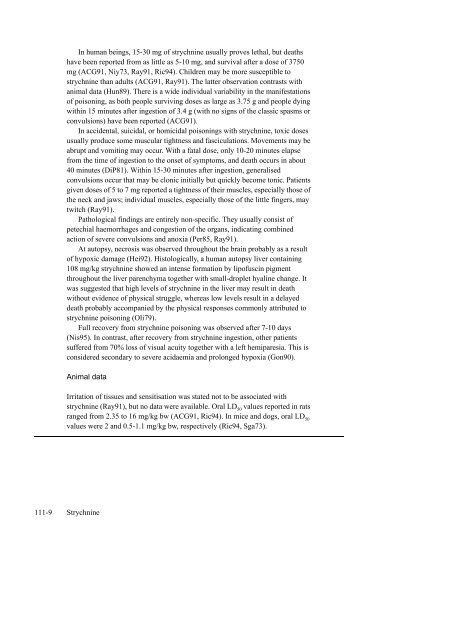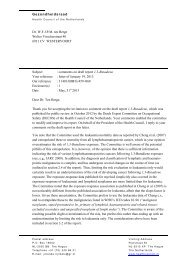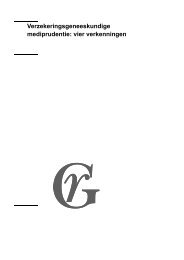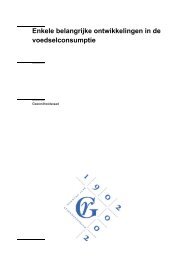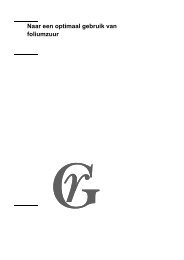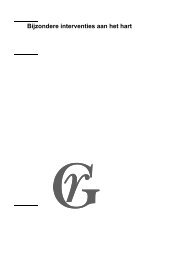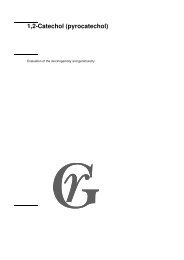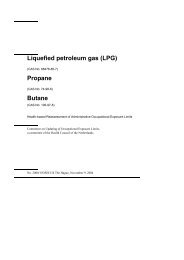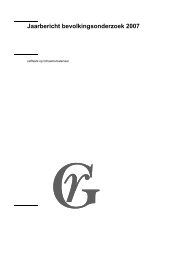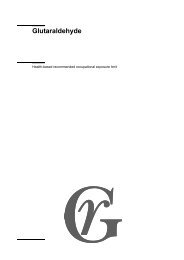Strychnine - Gezondheidsraad
Strychnine - Gezondheidsraad
Strychnine - Gezondheidsraad
Create successful ePaper yourself
Turn your PDF publications into a flip-book with our unique Google optimized e-Paper software.
In human beings, 15-30 mg of strychnine usually proves lethal, but deaths<br />
have been reported from as little as 5-10 mg, and survival after a dose of 3750<br />
mg (ACG91, Niy73, Ray91, Ric94). Children may be more susceptible to<br />
strychnine than adults (ACG91, Ray91). The latter observation contrasts with<br />
animal data (Hun89). There is a wide individual variability in the manifestations<br />
of poisoning, as both people surviving doses as large as 3.75 g and people dying<br />
within 15 minutes after ingestion of 3.4 g (with no signs of the classic spasms or<br />
convulsions) have been reported (ACG91).<br />
In accidental, suicidal, or homicidal poisonings with strychnine, toxic doses<br />
usually produce some muscular tightness and fasciculations. Movements may be<br />
abrupt and vomiting may occur. With a fatal dose, only 10-20 minutes elapse<br />
from the time of ingestion to the onset of symptoms, and death occurs in about<br />
40 minutes (DiP81). Within 15-30 minutes after ingestion, generalised<br />
convulsions occur that may be clonic initially but quickly become tonic. Patients<br />
given doses of 5 to 7 mg reported a tightness of their muscles, especially those of<br />
the neck and jaws; individual muscles, especially those of the little fingers, may<br />
twitch (Ray91).<br />
Pathological findings are entirely non-specific. They usually consist of<br />
petechial haemorrhages and congestion of the organs, indicating combined<br />
action of severe convulsions and anoxia (Per85, Ray91).<br />
At autopsy, necrosis was observed throughout the brain probably as a result<br />
of hypoxic damage (Hei92). Histologically, a human autopsy liver containing<br />
108 mg/kg strychnine showed an intense formation by lipofuscin pigment<br />
throughout the liver parenchyma together with small-droplet hyaline change. It<br />
was suggested that high levels of strychnine in the liver may result in death<br />
without evidence of physical struggle, whereas low levels result in a delayed<br />
death probably accompanied by the physical responses commonly attributed to<br />
strychnine poisoning (Oli79).<br />
Full recovery from strychnine poisoning was observed after 7-10 days<br />
(Nis95). In contrast, after recovery from strychnine ingestion, other patients<br />
suffered from 70% loss of visual acuity together with a left hemiparesia. This is<br />
considered secondary to severe acidaemia and prolonged hypoxia (Gon90).<br />
Animal data<br />
Irritation of tissues and sensitisation was stated not to be associated with<br />
strychnine (Ray91), but no data were available. Oral LD 50<br />
values reported in rats<br />
ranged from 2.35 to 16 mg/kg bw (ACG91, Ric94). In mice and dogs, oral LD 50<br />
values were 2 and 0.5-1.1 mg/kg bw, respectively (Ric94, Sga73).<br />
111-9 <strong>Strychnine</strong>


